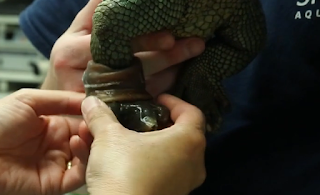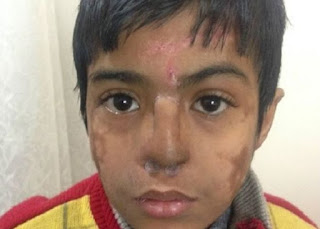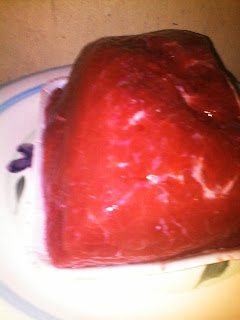
Whenever someone asks exactly what it is 3D printing is doing that’s so important, I’m torn between which examples to share first. With impacts occurring in so many sectors, from the space industry to automotive and construction, and far more, there are countless stories offering evidence as to exactly why this technology is important. The medical realm, however, is where you find the most compelling cases, and if you are one of those individuals today who have had their lives improved or that of a baby or family member saved, then what 3D printing means to you is something most of us can’t even imagine.
People around the world are reaping the benefits, as well as discovering an endless outlet for creativity. But while the human element and quality of life is a strong focus, certainly don’t discount our priority on making sure that pets and wildlife get in on this goodness too. 3D printed prosthetics in the human realm are becoming much more accessible and affordable thanks to volunteer groups like e-NABLE, providing replacement limbs for children in need all over the world from Uganda to Ghana and far beyond. And should you think that the goats, sheep, chickens, kitties, cockatoos, and dogs are being forgotten, well check earlier posts.
Now, that long list has a new favorite in the form of a semi-aquatic caiman lizard who, sadly, lost a rear leg to cancer last year. lizard Hiss Majesty is 16 years old and has a devoted family at the Shedd Aquarium in Chicago.
In trying to re-create a new leg and foot for this amazingly adorable creature—who patiently sits while they cover his foot in molding materials—the team, consisting of 3D designers, animal care specialists, and veterinarians, is certainly exhibiting a true labor of love, because it would seem that getting the perfect fit for those stubby little legs is not an easy task. They’ve tried ten designs so far for the right rear foot, with trial and error going strong, but with improvements in each iteration.

Translating the good rear left leg into a shape for the missing one, the team has used molding techniques and experimented until they have a nice collection. The use of flexible plastics that they have created so Hiss Majesty might have better mobility seemed like a likely choice for a prosthetic, along with the use of very lightweight silicone. The most recent top pick for Hiss Majesty is a 3D printed model with perfect chunky little toes and a prosthetic insert that’s like a sock for a nice tight fit.
He’s a quiet guy, Hiss, and the team isn’t sure how much the prosthetic, or the one they pick for him, will improve his life, but they are certainly going the extra mile at the 3D printer with the goal of fabricating a prosthetic that has as much joint-like movement as possible. With eventual plans to change his name to ‘Bionic Hiss Majesty,’ they continue to forge ahead and it would seem they are copiously honing their design and printing skills for the reptilian world.
“The goal for this is to see if we can get something that will actually work and use that as a tool in the future to improve animal care,” said designer Kristen Neria, who helped develop the prototypes.
This last prototype is much more flexible and lifelike—and promising—but they are continuing to explore the use of molds and 3D printing technology for further, even more advanced designs. Neria says their priority is definitely on emphasizing the movement of joints, and they may even start experimenting with titanium.
Hiss Majesty certainly has a twinkle in his eye and while everyone is hard at work trying to give him the prosthetic of the future, it would seem he’s pretty happy with the amount of attention he’s getting in the process, whether his foot is encased in plastic, silicone, or nothing at all.
[Source: Chicago Tribune]
 Whenever someone asks exactly what it is 3D printing is doing that’s so important, I’m torn between which examples to share first. With impacts occurring in so many sectors, from the space industry to automotive and construction, and far more, there are countless stories offering evidence as to exactly why this technology is important. The medical realm, however, is where you find the most compelling cases, and if you are one of those individuals today who have had their lives improved or that of a baby or family member saved, then what 3D printing means to you is something most of us can’t even imagine.
People around the world are reaping the benefits, as well as discovering an endless outlet for creativity. But while the human element and quality of life is a strong focus, certainly don’t discount our priority on making sure that pets and wildlife get in on this goodness too. 3D printed prosthetics in the human realm are becoming much more accessible and affordable thanks to volunteer groups like e-NABLE, providing replacement limbs for children in need all over the world from Uganda to Ghana and far beyond. And should you think that the goats, sheep, chickens, kitties, cockatoos, and dogs are being forgotten, well check earlier posts.
Now, that long list has a new favorite in the form of a semi-aquatic caiman lizard who, sadly, lost a rear leg to cancer last year. lizard Hiss Majesty is 16 years old and has a devoted family at the Shedd Aquarium in Chicago.
In trying to re-create a new leg and foot for this amazingly adorable creature—who patiently sits while they cover his foot in molding materials—the team, consisting of 3D designers, animal care specialists, and veterinarians, is certainly exhibiting a true labor of love, because it would seem that getting the perfect fit for those stubby little legs is not an easy task. They’ve tried ten designs so far for the right rear foot, with trial and error going strong, but with improvements in each iteration.
Whenever someone asks exactly what it is 3D printing is doing that’s so important, I’m torn between which examples to share first. With impacts occurring in so many sectors, from the space industry to automotive and construction, and far more, there are countless stories offering evidence as to exactly why this technology is important. The medical realm, however, is where you find the most compelling cases, and if you are one of those individuals today who have had their lives improved or that of a baby or family member saved, then what 3D printing means to you is something most of us can’t even imagine.
People around the world are reaping the benefits, as well as discovering an endless outlet for creativity. But while the human element and quality of life is a strong focus, certainly don’t discount our priority on making sure that pets and wildlife get in on this goodness too. 3D printed prosthetics in the human realm are becoming much more accessible and affordable thanks to volunteer groups like e-NABLE, providing replacement limbs for children in need all over the world from Uganda to Ghana and far beyond. And should you think that the goats, sheep, chickens, kitties, cockatoos, and dogs are being forgotten, well check earlier posts.
Now, that long list has a new favorite in the form of a semi-aquatic caiman lizard who, sadly, lost a rear leg to cancer last year. lizard Hiss Majesty is 16 years old and has a devoted family at the Shedd Aquarium in Chicago.
In trying to re-create a new leg and foot for this amazingly adorable creature—who patiently sits while they cover his foot in molding materials—the team, consisting of 3D designers, animal care specialists, and veterinarians, is certainly exhibiting a true labor of love, because it would seem that getting the perfect fit for those stubby little legs is not an easy task. They’ve tried ten designs so far for the right rear foot, with trial and error going strong, but with improvements in each iteration.
 Translating the good rear left leg into a shape for the missing one, the team has used molding techniques and experimented until they have a nice collection. The use of flexible plastics that they have created so Hiss Majesty might have better mobility seemed like a likely choice for a prosthetic, along with the use of very lightweight silicone. The most recent top pick for Hiss Majesty is a 3D printed model with perfect chunky little toes and a prosthetic insert that’s like a sock for a nice tight fit.
He’s a quiet guy, Hiss, and the team isn’t sure how much the prosthetic, or the one they pick for him, will improve his life, but they are certainly going the extra mile at the 3D printer with the goal of fabricating a prosthetic that has as much joint-like movement as possible. With eventual plans to change his name to ‘Bionic Hiss Majesty,’ they continue to forge ahead and it would seem they are copiously honing their design and printing skills for the reptilian world.
“The goal for this is to see if we can get something that will actually work and use that as a tool in the future to improve animal care,” said designer Kristen Neria, who helped develop the prototypes.
This last prototype is much more flexible and lifelike—and promising—but they are continuing to explore the use of molds and 3D printing technology for further, even more advanced designs. Neria says their priority is definitely on emphasizing the movement of joints, and they may even start experimenting with titanium.
Hiss Majesty certainly has a twinkle in his eye and while everyone is hard at work trying to give him the prosthetic of the future, it would seem he’s pretty happy with the amount of attention he’s getting in the process, whether his foot is encased in plastic, silicone, or nothing at all.
[Source: Chicago Tribune]
Translating the good rear left leg into a shape for the missing one, the team has used molding techniques and experimented until they have a nice collection. The use of flexible plastics that they have created so Hiss Majesty might have better mobility seemed like a likely choice for a prosthetic, along with the use of very lightweight silicone. The most recent top pick for Hiss Majesty is a 3D printed model with perfect chunky little toes and a prosthetic insert that’s like a sock for a nice tight fit.
He’s a quiet guy, Hiss, and the team isn’t sure how much the prosthetic, or the one they pick for him, will improve his life, but they are certainly going the extra mile at the 3D printer with the goal of fabricating a prosthetic that has as much joint-like movement as possible. With eventual plans to change his name to ‘Bionic Hiss Majesty,’ they continue to forge ahead and it would seem they are copiously honing their design and printing skills for the reptilian world.
“The goal for this is to see if we can get something that will actually work and use that as a tool in the future to improve animal care,” said designer Kristen Neria, who helped develop the prototypes.
This last prototype is much more flexible and lifelike—and promising—but they are continuing to explore the use of molds and 3D printing technology for further, even more advanced designs. Neria says their priority is definitely on emphasizing the movement of joints, and they may even start experimenting with titanium.
Hiss Majesty certainly has a twinkle in his eye and while everyone is hard at work trying to give him the prosthetic of the future, it would seem he’s pretty happy with the amount of attention he’s getting in the process, whether his foot is encased in plastic, silicone, or nothing at all.
[Source: Chicago Tribune]













